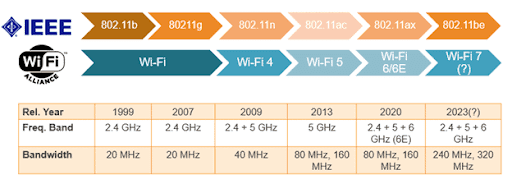Wi-Fi 7 - The future of Wi-Fi

Wi-Fi 7 Known as 802.11be Extremely High Throughput or simply Wi-Fi 7, building upon the previous iteration of Wi-Fi 6/ 802.11ax adopted back in 2020. Wi-Fi 7 is available for the 2.4Ghz, 5Ghz and 6Ghz frequency bands and is looking to bring in additional changes to try and bump up throughput, interference mitigation and better use of the medium. I'll be going over a few of the notable changes below from documents provided to us by the IEEE. Pre-warning you, the standard itself is subject to change as they work through the motions with a potential for full approval in 2024. IEEE however are quite good at keeping documentation up to date and I shall provide links to the relevant documents below for future use. https://ieeexplore.ieee.org/document/9090146 320Mhz Channels and 240Mhz We start with a simple change, channel bonding. The standard is looking increase overall channel bonding to 320Mhz, doubling the size from Wi-Fi 6 and its 160Mhz maxim...


